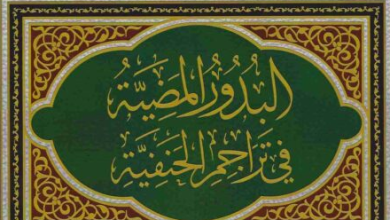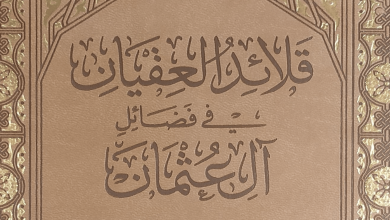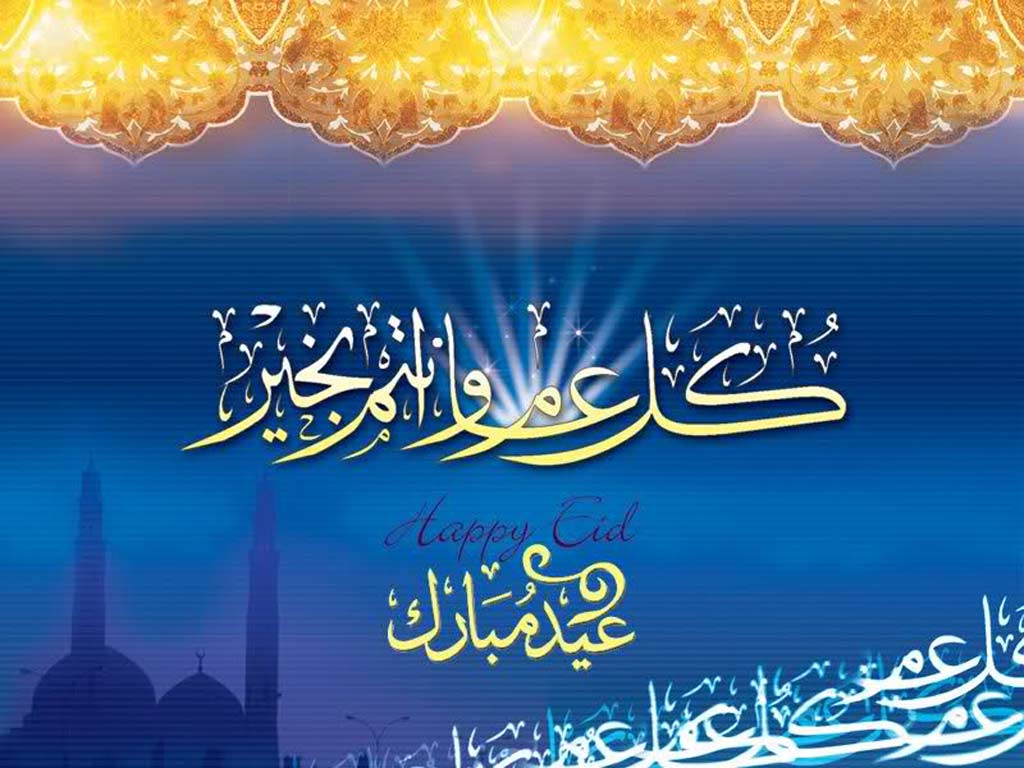Book Review: “An Introduction to the Disciplines of the Noble Hadīth”
The following piece has been distributed here with permission of the author. This work is noteworthy for the scholars and students of the esteemed Science of Hadith (Ulum al-Hadith).
Book Review: “An Introduction to the Disciplines of the Noble Hadīth”
Author: Mufti Abdul Mālik al-Kumillā’ī
By Shaykh Muntasir Zamān
Being the second source of Islāmic law, the blessed hadīths of the Prophet (peace and blessings be upon him) hold a lofty position in the hearts of Muslims. The science of hadīth is extremely vast and requires strenuous effort to familiarize oneself with even its basic concepts.
Students of dīn are generally interested in gaining some acquaintance with the various genres of hadīth literature, and to learn how to search for a hadīth in the relevant works. In earlier times, this was a talent naturally acquired in the course of a scholar’s general studies and was not in need of any separate study or specialist course. However, due to the infrequent usage of such works, the general condition nowadays is that very few are able to navigate through the hadīth literature and locate a hadīth in the relevant compilations and, perhaps more importantly, find the correct ruling of the hadīth in terms of its authenticity or inauthenticity from the experts of the science.
Many books have been written as an introduction and basic guide for beginners to learn how and where to search for hadīths, and the methods used to analyze their strength. Examples of such books are:
- Usūl al-Takhrīj wa Dirāsat al-Asānīd by Dr. Mahmūd al-Tahhān,
- Takhrīj al-Hadīth al-Sharīf[1] by Dr. Nā’if Biqā‘ī, and
- Kayfa Nadrus ‘Ilm al-Takhrīj by Shaykh Hamzah al-Malibārī and Dr. al-‘Akā’ilah, among other books.
However, one of the most beneficial and comprehensive books is al-Madkhal ilā ‘Ulūm al-Hadīth al-Sharīf (An Introduction to the Disciplines of the Noble Hadīth) of Mufti Abdul Mālik.
In this short review of his book, we will briefly discuss the background and academic qualifications of the author, followed by a summary of the book. We have also provided a digital copy for the benefit of readers.
It is necessary to point out that by merely reading several books of this nature, one does not become an expert hadīth scholar. Rather, he must stay in the company of the experts of the field and invest long hours burying himself in the books.
Click here for Pdf copy of al-Madkhal ila Ulum al-Hadith al-Sharif
Author
His name is Muhammad Abdul Mālik. He was born in the year 1969 in the city of Comilla, Bangladesh. He began his education in Kherihar Qaumi Madrassa in his hometown, where he studied until the completion of Mishkāt al-Masābīh. Thereafter, he travelled to Pākistan and took admission at the prestigious Jāmi‘atul ‘Ulūm, Binnorī Town. He graduated in the year 1988, after which he enrolled in the department of Takhassus fī al-Hadīth (hadith specialization) under the tutelage of Mawlāna ‘Abdur Rashīd al-Nu‘mānī, for three years, graduating in the year 1991. He then specialized in Fiqh and Fatwa under the guidance of Muftī Muhammad Taqī ‘Uthmānī at Dārul ‘Ulūm Karāchī, from where he graduated in the year 1993. He had the honor of working as a researcher under the leading authority in hadith, Shaykh ‘Abd al-Fāttāh Abū Ghuddah in Riyādh until 1995.
In 1996, he joined Markaz al-Da‘wah al-Islāmiyyah in Bangladesh. Currently, he is the director of education at the institution and heads the department of Takhassus fi al-Hadīth. In 2005, he founded the monthly Islāmic Bengali Magazine, al-Kawsar. He also teaches ‘Ulūm al-Hadīth in Jāmī‘at al-‘Ulūm al-Islāmiyyah, Dhaka. He has authored several research papers in Bengali and Arabic, among which is the book under discussion, al-Madkhal ‘ilā ‘Ulūm al-Hadīth.[2]
Book
A description of the book is provided on the cover which reads as follows:
The book consists of principles on locating hadīth and searching for [biographical accounts of] its narrators, and important points regarding narrator criticism (al-jarh wa al-ta‘dīl) and grading [a hadīth] as authentic or inauthentic.
The book consists of 215 pages: pages 1-177 is the book itself, 181-199 is an article by ‘Allāmah al-Kawtharī and 199-215 is multiple indexes of the book.
In the introduction, Mufti Abdul Mālik discusses the present condition of the science of hadīth and negligence in regards to many of its important branches. He mentions that it is necessary to be aware of five aspects of a hadīth:
- Determining the correct names of the narrators
- Ascertaining the status of the narrators
- Correct wording of the text
- Knowing the grading of the hadīth in regards to its authenticity and weakness
- The jurisprudential content of the hadīth, and the laws, lessons, and etiquettes found therein
Despite the importance of the fifth aspect and it being the ultimate purpose of studying hadīth, it is from the fruits of the first four, and the fruits can only be reaped once the tree is present and fully-grown.
In the introduction, he also addresses a question regarding specializing in the science of hadīth that students frequently ask:
Scholars have already written ample works in this field, and they already distinguished between the authentic and weak reports, so what is the need to specialize in the science when all the work is done?
He answers this by pointing out that this is the case with all the sciences of Islām, as each field has countless works, commentaries, and marginalia. Yet, there is still a need to specialize. In Fiqh, for example, despite the presence of works such as Radd al-Muhtār, students specialize in Iftā. A specialist in every discipline understands that we are unable to truly benefit from the heritage and works of these great scholars until we are well-acquainted with their nomenclature and principles, and that can only be achieved by devoting ourselves to their close study.
From pages 29-82, he discusses the different methods of locating a Hadīth, which are:
- By means of its subject matter and content
- By means of the Sahābī who narrated it
- By means of books on al-Atrāf
- By means of knowing the beginning portion
- With the assistance of the various indexes
- Using computer programs
Thereafter, he mentions several important points concerning locating a hadīth, such as the necessity of exercising caution when negating the existence of a hadīth (84-94). This is followed by a discussion on issues which are often neglected despite their importance, such as the convention in citations of mentioning the most authentic source of the hadīth first and then the next most authentic and so on (97-103).
From pages 112-139, he discusses how to find biographical information about the narrators of the hadīth. He mentions many other beneficial issues regarding this step.
From pages 147-176, he mentions twelve points regarding grading a hadīth and al-jarh wa al-ta‘dīl, some of which are:
- Understanding the terminology of the Imāms does not make one an Imām
- Grading a hadīth as authentic or weak is a matter of ijtihād and thus subject to valid differences of opinion
- Discussion pertaining to the principle “narrator criticism has precedence over narrator accreditation”
Among many other priceless advices for anyone interested in studying the science.
After completing the book, Mufti Abdul Mālik, as an addendum, added an article by ‘Allāmah al-Kawtharī entitled, “What is the method of reviving the disciplines of Hadīth and Sunnah” originally known as, “Reviving the disciplines of Sunan in al-Azhar.”
Conclusion
In brief, al-Madkhal of Mufti Abdul Mālik is an extremely valuable book on its subject matter. Many books have been written on this topic, but al-Madkhal is unique due to the myriad of topics, advices, and years’ worth of experience added to it.
In many places, the author stresses the fact that this book is only to serve as a guide and that in order to understand the science properly it is necessary to study under a trained expert and spend long hours studying.
Since the book is only printed in Bangladesh and it is very difficult to get a copy elsewhere, we have provided a digital copy.
———————————————————————————————–
[1] It would be beneficial for students to note that Dr. Biqā‘ī’s book is excellent for practical examples and exercises.
[2] http://en.wikipedia.org/wiki/Muhammad_Abdul_Malek






